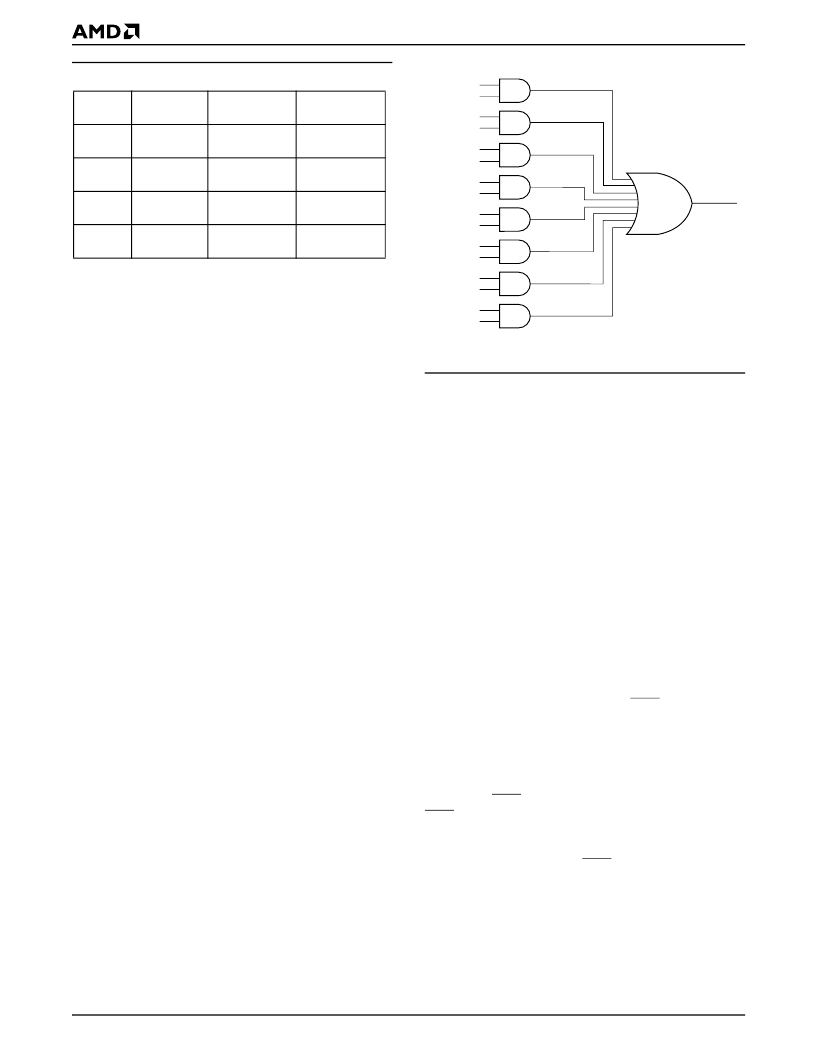- 您現(xiàn)在的位置:買賣IC網(wǎng) > PDF目錄366550 > AM79C972 (Advanced Micro Devices, Inc.) PCnet⑩-FAST+ Enhanced 10/100 Mbps PCI Ethernet Controller with OnNow Support PDF資料下載
參數(shù)資料
| 型號: | AM79C972 |
| 廠商: | Advanced Micro Devices, Inc. |
| 英文描述: | PCnet⑩-FAST+ Enhanced 10/100 Mbps PCI Ethernet Controller with OnNow Support |
| 中文描述: | PCnet⑩與OnNow增強10/100 Mbps的快速以太網(wǎng)控制器支持的PCI |
| 文件頁數(shù): | 84/130頁 |
| 文件大小: | 1580K |
| 代理商: | AM79C972 |
第1頁第2頁第3頁第4頁第5頁第6頁第7頁第8頁第9頁第10頁第11頁第12頁第13頁第14頁第15頁第16頁第17頁第18頁第19頁第20頁第21頁第22頁第23頁第24頁第25頁第26頁第27頁第28頁第29頁第30頁第31頁第32頁第33頁第34頁第35頁第36頁第37頁第38頁第39頁第40頁第41頁第42頁第43頁第44頁第45頁第46頁第47頁第48頁第49頁第50頁第51頁第52頁第53頁第54頁第55頁第56頁第57頁第58頁第59頁第60頁第61頁第62頁第63頁第64頁第65頁第66頁第67頁第68頁第69頁第70頁第71頁第72頁第73頁第74頁第75頁第76頁第77頁第78頁第79頁第80頁第81頁第82頁第83頁當前第84頁第85頁第86頁第87頁第88頁第89頁第90頁第91頁第92頁第93頁第94頁第95頁第96頁第97頁第98頁第99頁第100頁第101頁第102頁第103頁第104頁第105頁第106頁第107頁第108頁第109頁第110頁第111頁第112頁第113頁第114頁第115頁第116頁第117頁第118頁第119頁第120頁第121頁第122頁第123頁第124頁第125頁第126頁第127頁第128頁第129頁第130頁

84
Am79C972
Table 11.
LED Default Configuration
For each LED register, each of the status signals is
AND
’
d with its enable signal, and these signals are all
OR
’
d together to form a combined status signal. Each
LED pin combined status signal can be programmed to
run to a pulse stretcher, which consists of a 3-bit shift
register clocked at 38 Hz (26 ms). The data input of
each shift register is normally at logic 0. The OR gate
output for each LED register asynchronously sets all
three bits of its shift register when the output becomes
asserted. The inverted output of each shift register is
used to control an LED pin. Thus, the pulse stretcher
provides 2 to 3 clocks of stretched LED output, or 52
ms to 78 ms. See Figure 47.
Power Savings Mode
Power Management Support
PCnet-FAST+ supports power management as defined
in the PCI Bus Power Management Interface Specifica-
tion V1.0 and Network Device Class Power Manage-
ment Reference Specification V1.0.These
specifications define the network device power states,
PCI power management interface including the Capa-
bilities Data Structure and power management regis-
ters block definitions, power management events, and
OnNow network Wake-up events. In addition,
PCnet-
FAST
+ supports legacy power management
schemes, such as Remote Wake-Up (RWU) mode.
When the system is in RWU mode, PCI bus power is
on, the PCI clock may be slowed down or stopped, and
the wake-up output pin may drive the CPU's System
Management Interrupt (SMI) line.
Figure 47.
LED Control Logic
The general scheme for the PCnet-
FAST+
power man-
agement is that when a PCI Wake-up event is detected,
a signal is generated to cause hardware external to the
PCnet-
FAST+
device to put the computer into the work-
ing (S0) mode.
The PCnet-
FAST
+ device supports three types of
wake-up events:
1. Magic Packet Detect
2. OnNow Pattern Match Detect
3. Link State Change
Figure 48 shows the relationship between these Wake-
up events and the various outputs used to signal to the
external hardware.
Note:
The OnNOW Pattern Match and Link State
Change only work on the MII interface.
OnNow Wake-Up Sequence
The system software enables the PME pin by setting
the PME_EN bit in the PMCSR register (PCI configura-
tion registers, offset 44h, bit 8) to 1. When a Wake-up
event is detected, the PCnet-
FAST
+ device sets the
PME_STATUS bit in the PMCSR register (PCI configu-
ration registers, offset 44h, bit 15). Setting this bit
causes the PME signal to be asserted. Assertion of the
PME signal causes external hardware to wake up the
CPU. The system software then reads the PMCSR reg-
ister of every PCI device in the system to determine
which device asserted the PME signal.
LED
Output
Indication
Driver Mode
Open Drain -
Active Low
Open Drain -
Active Low
Open Drain -
Active Low
Open Drain -
Active Low
Pulse Stretch
LED0
Link Status
Status
Enabled
LED1
Enabled
LED2
--
Enabled
LED3
Transmit
Status
Enabled
COL
COLE
FDLS
FDLSE
LNKS
LNKSE
RCV
RCVE
RCVM
RCVME
XMT
XMTE
To
Pulse
Stretcher
_SPEED_SEL
100E
MPS
MPSE
21485C-50
相關PDF資料 |
PDF描述 |
|---|---|
| AM79C972BVIW | PCnet⑩-FAST+ Enhanced 10/100 Mbps PCI Ethernet Controller with OnNow Support |
| AM79C974 | PCnetTM-SCSI Combination Ethernet and SCSI Controller for PCI Systems |
| AM79C974KCW | PCnetTM-SCSI Combination Ethernet and SCSI Controller for PCI Systems |
| AM79C975 | PCnet⑩-FAST III Single-Chip 10/100 Mbps PCI Ethernet Controller with Integrated PHY |
| AM79C973 | PCnet⑩-FAST III Single-Chip 10/100 Mbps PCI Ethernet Controller with Integrated PHY |
相關代理商/技術(shù)參數(shù) |
參數(shù)描述 |
|---|---|
| AM79C972BKC\\W | 制造商:Advanced Micro Devices 功能描述: |
| AM79C972BKC\W | 制造商:Advanced Micro Devices 功能描述: |
| AM79C972BKCW | 制造商:AMD 制造商全稱:Advanced Micro Devices 功能描述:PCnet⑩-FAST+ Enhanced 10/100 Mbps PCI Ethernet Controller with OnNow Support |
| AM79C972BKD/W | 制造商:Advanced Micro Devices 功能描述: |
| AM79C972BKD\\W | 制造商:Advanced Micro Devices 功能描述: |
發(fā)布緊急采購,3分鐘左右您將得到回復。